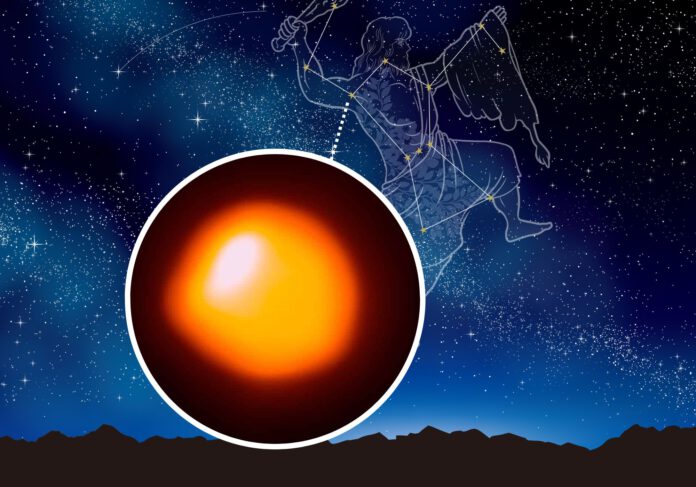
The upcoming celestial spectacle: Betelgeuse’s momentary disappearance
On the 12th of December, the renowned star Betelgeuse will briefly disappear from sight as it nestles behind the asteroid 319 Leona.
Situated approximately 530 light-years from Earth, the red supergiant Betelgeuse graces our cosmos. This colossal star can be viewed with the naked eye on clear evenings, its striking red hue distinguishing it from other celestial bodies. However, Betelgeuse will temporarily fade from view on December 12 as it moves behind asteroid 319 Leona in a rare cosmological event.
A long-anticipated event
“We have waited for years, and the moment is finally here,” stated the Virtual Telescope Project in a release. “On December 12, 2023, asteroid 319 Leona will momentarily align between us and the star Betelgeuse, causing an eclipse. While Betelgeuse is situated at a great distance, this alignment is purely a matter of perspective. The outcome, though, will be truly stunning.”
The Occultation
Throughout the occultation, Betelgeuse will disappear for a short period. The precise duration of this disappearance remains a mystery to astronomers and will depend on the angular size between this gigantic star and the asteroid – data not yet accurately known. Experts conjecture that Betelgeuse will vanish from our view for mere seconds. Further complicating observations is the viewer’s location on Earth, as only a narrow strip of our planet will witness this extraordinary event.
A Glimpse into the future
The occultation, in fact, provides a sneak peek of what lies ahead in the distant future. During this event, we will briefly envision the nocturnal heavens stripped of Betelgeuse when it eventually explodes as a supernova before fading into obscurity (see box). The exact timing of Betelgeuse’s explosion remains uncertain. Generally, it is anticipated to occur in the astronomic near future, within the next 100,000 years or so. Thankfully, the distance to Earth is sizeable enough that we will not directly experience any harmful effects from the supernova explosion. Nonetheless, future generations might witness a spectacular cosmic fireworks display!
Valuable information to be garnered
The occultation is expected to yield other valuable information as well. “Such occultations are particularly valuable for revealing the shape of the involved asteroid,” says astrophysicist Gianluca Masi, director of the Virtual Telescope Project. “In this case, we even hope to examine the surface of Betelgeuse. As 319 Leona transits in front of it from our vantage point on Earth, we hope to gain insight into the large convection cells on this red supergiant’s surface responsible for its variable brightness.”
The observations from Southern Italy
Astronomers from the Virtual Telescope Project will voyage to Southern Italy, one of the few locations on Earth where the occultation will be clearly visible. Not only will they marvel at this rare happening from this spot, but they will also attempt to collect invaluable scientific data.
Keen to join the observation? The Virtual Telescope Project will host a live broadcast. The session is scheduled to commence on December 12, 2023, starting at 02:00 CET.











